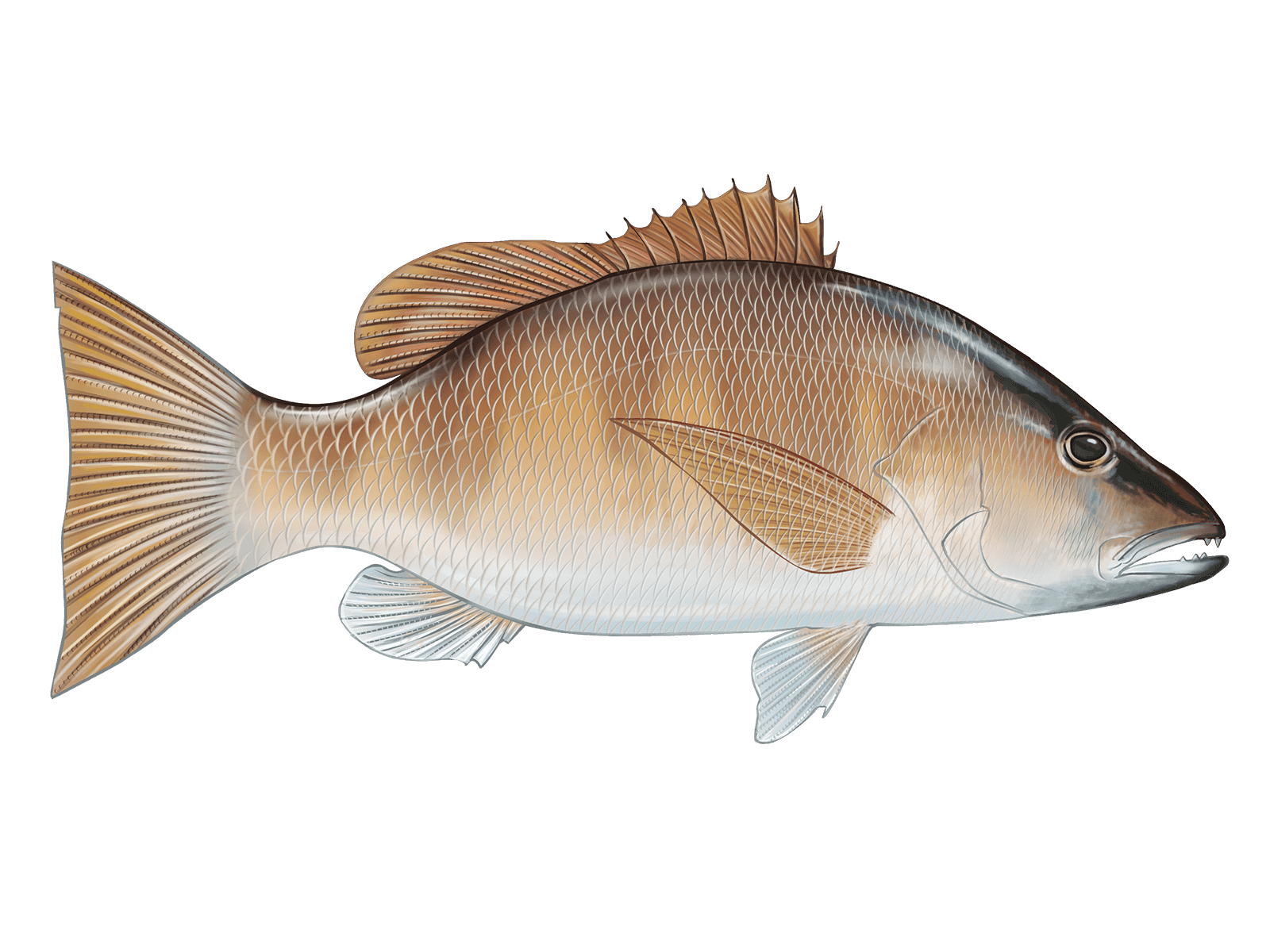Grey Snapper

Species Details
Lutjanus Griseus
Lutjanidae
Perciformes
River, Lake, Onshore, Near shore, Reef, Backcountry
1 - 8 lbs.
30" - 35"
Grey Snapper (Lutjanus Griseus) Description
Also known as the Mangrove Snapper, the Grey Snappers are known for their greyish red color that changes from copper-red to bright red. From a dorsal view (top view), one can see a dark stripe that runs across its eye while it's swimming. Grey Snappers also have a pointed snout and thin lips with small teeth.
However, the Grey Snapper can be confused with other fish such as the Cubera Snapper and the Black Snapper. And the best way to tell apart a Grey Snapper from the Cubera Snapper is by opening its mouth. Unlike the Cubera Snapper, the Grey Snapper has a triangular-shaped tooth patch whereas the former has an arrow-shaped tooth patch. However, the Grey Snapper’s tooth patch doesn’t have an extension unlike that of the Cubera Snapper.
Grey Snapper Diet
Grey Snappers are known for being opportunistic hunters. They sometimes feed on zooplankton. Young Grey Snappers usually feast near seagrass beds where they can eat a variety of crustaceans and smaller fish. Grey Snappers are carnivorous for a more piscine diet.
Grey Snapper Size
The Grey Snapper can measure between 10-14 inches, weighing between 1-2 lbs. However, if found in open water, Grey Snappers can weigh as heavy as 20 lbs! However, fishing inshore usually yields lower numbers rarely exceeding 3-4 lbs.
Interesting Facts about the Grey Snapper
- Grey Snapper are usually prized for their white, flaky, soft meat.
- During full moons, Grey Snappers spawn millions of eggs.
- They are considered the most abundant among their species.
- Interestingly, Juvenile Gray Snappers have darker colors than their adults.
- Grey Snappers are nocturnal animals.
- They usually feed and are more active at night.
- They’re not aggressive towards humans.
- Grey Snappers are known to be swift swimmers.
Grey Snapper – Fishing Techniques: How to Fish for a Grey Snapper
When fishing for a Grey Snapper, many anglers would recommend using a 4J hook as it’ll easily get them hooked. Once you have your hook, anglers would recommend using live bait. One of the most common recommendations was using a live shrimp. Instead of sticking the hook through its head, keep it stuck in its tail. This will allow your shrimp to live for quite a long time. However, other people would recommend using mud minnows. Once you have chosen your bait, thread your line through your bobber and knot it to your hook. Make sure your line is something that can handle a lot of abrasions since you’ll be letting your bait sink down.
Next, let your bait sink to the bottom. No need to do any fancy casting or reeling. Grey Snappers seek opportunities so having too much movement might throw them off. Once you feel your bait is all the way at the bottom, reel it up a little so your hook doesn’t get snagged anywhere.
Next, pick your spot. One of the more recommended spots is at a beach pier or at docks. Normally, those structures are built near water columns where the Grey Snapper like to be in.
Since they are opportunistic, Grey Snappers like to ambush their prey. Bobbing it too many times might drive them off so let it dangle and float until they feel that they can seize the opportunity. Once you feel a tug, don’t jerk it up. Reel it in to make sure the hook gets through before slowly bringing the Grey Snapper to the surface.
Grey Snapper Habitat and Distribution
Grey Snappers stay among canals or grass flats or any place with warm to temperate waters. These fish love structures as it serves as their cover as opportunistic predators. They like rocks, mangrove forests, shipwrecks, and debris. If you’re fishing in open water, let your bait sink down into the reefs to draw them out.







